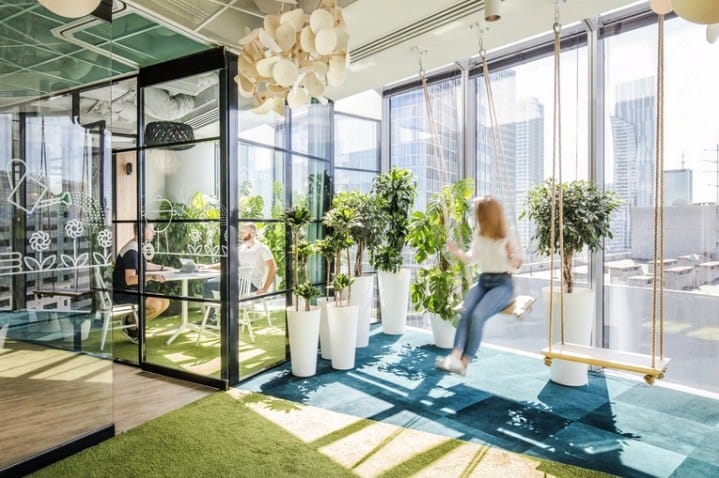There is obviously a link between the aesthetics of an environment and how it affects people. Humans have always decorated their surroundings to improve their connection and enjoyment of a space; cave paintings found in Europe are thousands of years old and the recurring subjects and themes are those found in our natural environment: trees, animals and people.

It is no surprise to learn that architects and interior designers are advocating the benefits of biophilic design in the workplace. Biophilia refers to the innate relationship between humans and nature – but how do we embrace biophilia when the majority of people work within four concrete walls?
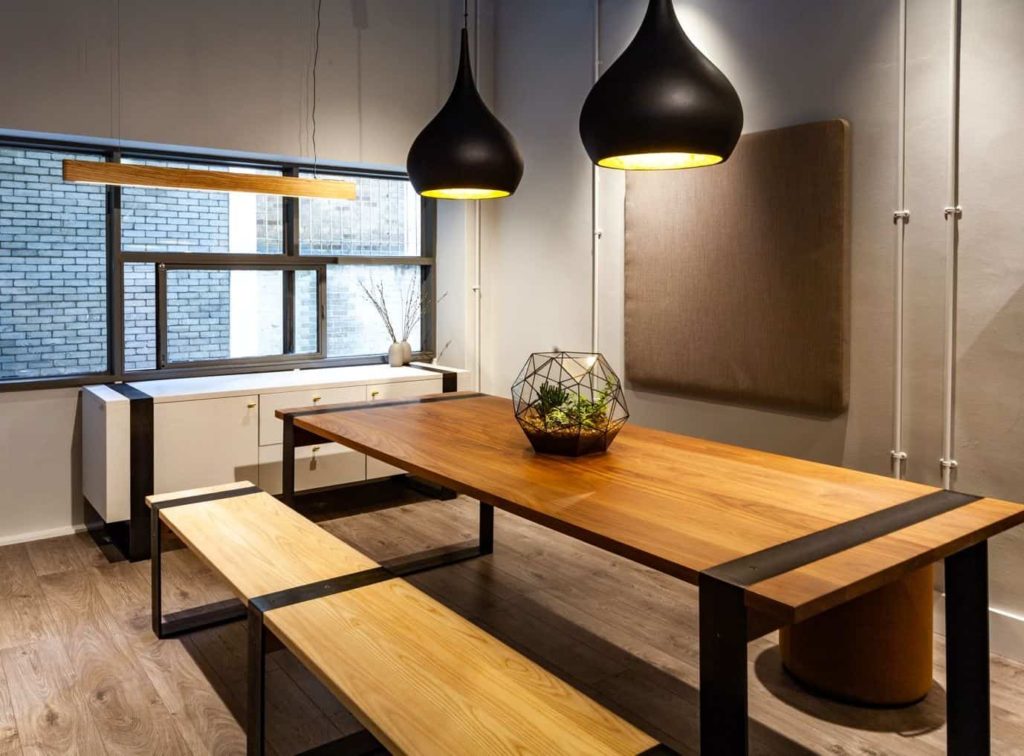
Bill Browning, Founding Partner of Terrapin Bright Green, says that “new science is informing our choices to improve people’s experience of the built environment.” This means that there are more resources available to help tackle universal problems companies are facing on a daily basis such as employee wellbeing, productivity and talent retention.
Office landscape:
The United Nations predicts that by 2030, 60% of the world’s population will live in urban environments. With humans’ built-in desire to be close to nature, biophilic design is an effective way to make a workspace more attractive to potential candidates
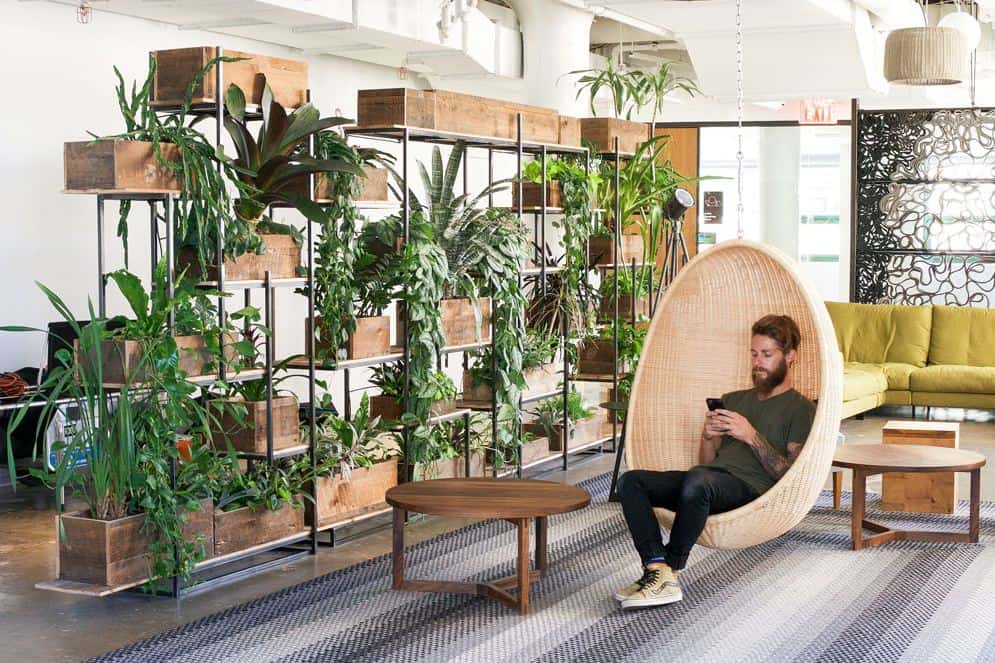
The Global Human Spaces report found that 33% of office workers say that the design of an office would affect their decision to work for a company. Furthermore, 47% of employees have no natural light and 58% confirmed that their workspace hasn’t got a single plant.
When extensive evidence substantiates that people want to feel close to nature, it’s obvious that biophilic design in the workplace will be a key benefit to making your employer brand stand out head and shoulders above the rest.
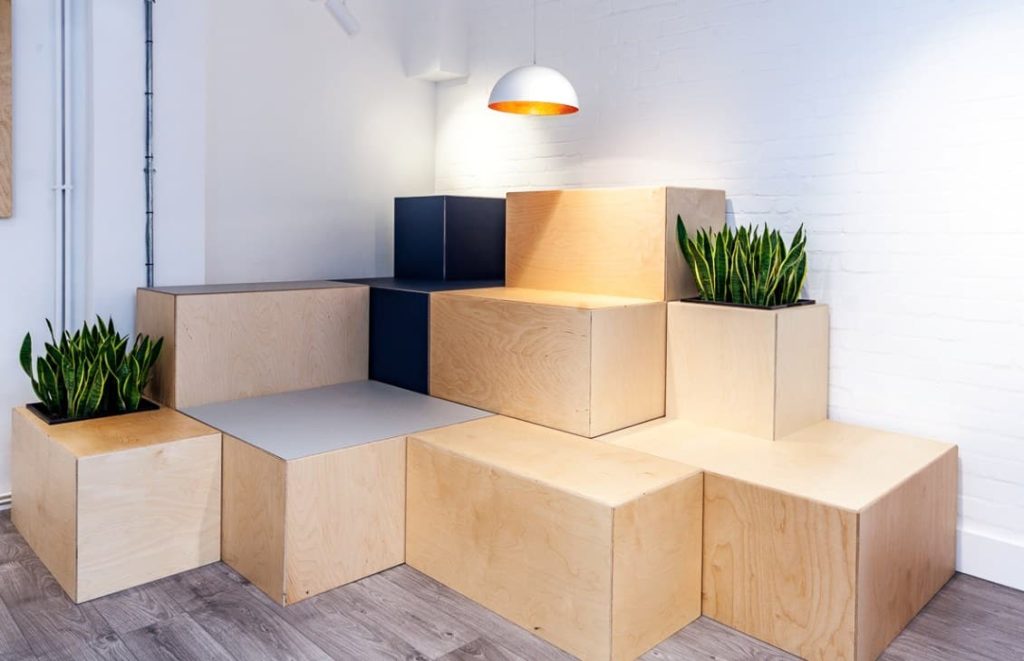
‘Huddlebox’ by Workagile effortlessly incorporates biophilic design in to multifunctional furniture.
Elemental preference:
There are various ways in which biophilic design can be implemented within an office. Workers were asked to list their top 5 most wanted elements within their workspace. 44% said natural light, 20% opted for plants, 19% requested a quiet working space, 17% would like views of the sea and 15% wanted bright colours.
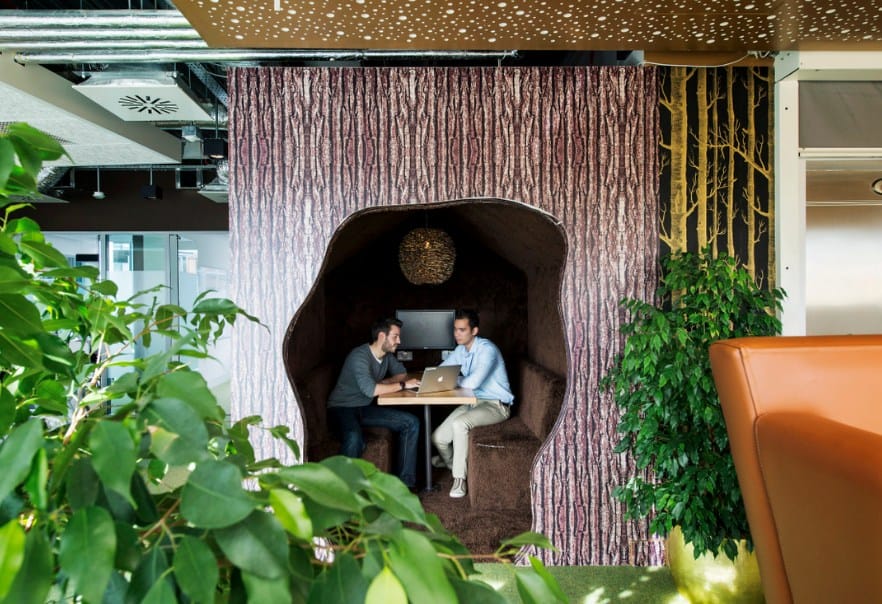
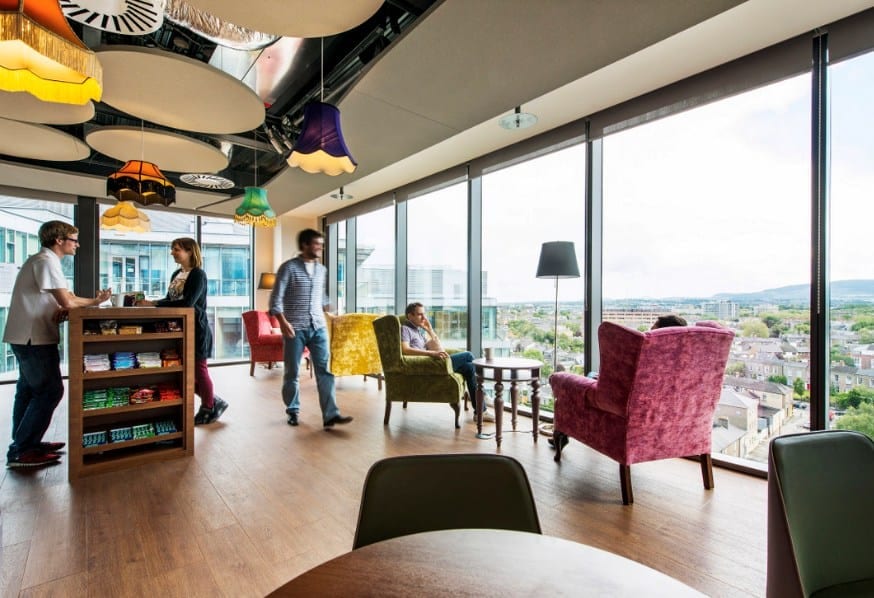
Google and Apple offices are notorious for well-designed workspaces, providing their employees with human-centric biophilic design. The majority of rooms have floor to ceiling windows, access to open spaces such as gardens or patios and plenty of leafy green plants in each area. The benefits of biophilic design are measurable; Google and Apple have commented on improved employee wellbeing and increased productivity.
Urban solutions:
Whilst it would be desirable, it may not be feasible to have an office view overlooking a forest or lake. Studies from the Human Spaces Global report found that biophilia can be referenced with particular colours, that elicit particular reactions within employees. The evidence confirmed the following:
- Colours with a significant impact on workers’ motivation: blue, green and white
- Colours with a significant impact on workers’ productivity: blue, green, white and yellow
- Colours with a significant impact on workers’ creativity: green, white and yellow
Indirect connections to biophilic design will still benefit workers. 67% of those studied in the Human Spaces Global report said that they felt happier when walking in to bright office environments accented with green, yellow or blue colours.
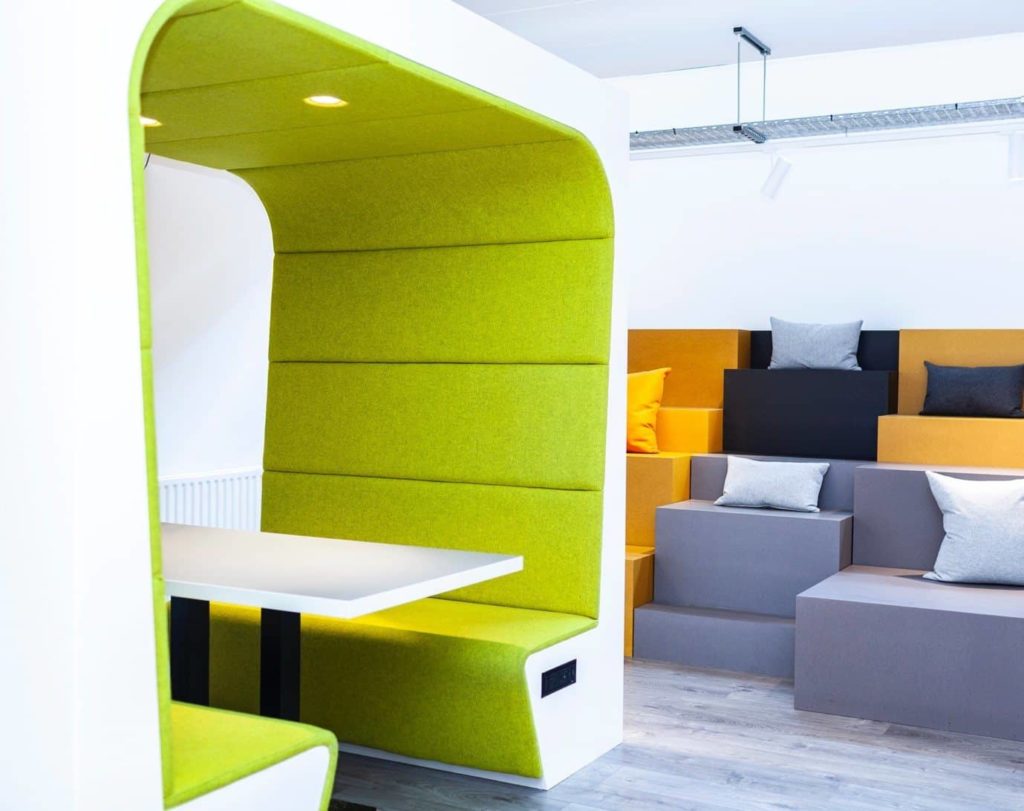
Biophilic design significantly impacts how humans behave in the workplace. Considerable studies confirm that humans need to be closer to nature in order work smarter, healthier, and to experience an overall sense of wellbeing. Further articles can be found on aspects of biophilia in the workplace that focus on shelter and elevation, or to discuss one of the products featured in this article get in touch with Workagile on 020 3904 6688 or email london@work-agile.com.
